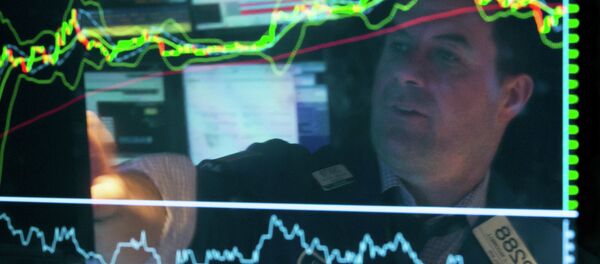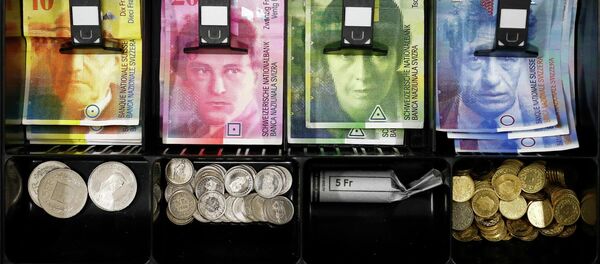Kristian Rouz – Russia’s national currency, the ruble, has made significant gains against the US dollar and is the best preforming currency this year, after its dramatic collapse in late 2014.
The ruble advanced 12 percent this year after a dramatic slump of nearly 46 percent last year. The two main factors for the ruble’s depreciation at that point – oil prices fell by 50 percent and the international sanctions against select Russian enterprises and individuals, limiting Russia’s ability to borrow in hard currencies.
These issues are still affecting the ruble, meaning the driving force behind the ruble has to do with strong leadership by the Russian Central Bank. Throughout Russia’s recent history, the ruble has only weakened, suffering one wave of hyperinflation after another in the early 1990s, depreciating fivefold in 1998, retreating 30 percent in 2008, and falling 46 percent in 2014.
During most of the last 15 years, Russia’s currency fluctuated near 30 rubles per 1 dollar, declining to its lowest of 79 against the dollar in mid-December 2014.
According to Russia’s Ministry of Economic Development (generally confirmed by a separate study of Morgan Stanley analysts), the current oil price of $55/bbl provides for the ruble FX rate of 60 against the dollar. Now, oil has retreated by 7 percent during last 10 days, while the ruble added 3 percent. A paradox?
Since international sanctions cut off Russian enterprises from international capital markets, dollar-denominated loans for Russian business have only played a minor factor in the ruble's rise. However, the scale of the CBR measures is obviously insufficient, with Russia’s FX reserves at $355.30 billion, while the total debt, including that of Russia’s companies, stood at $598.7 billion, servicing costs excluded.
The main factor behind the ruble’s gains is that Russian assets have suddenly become increasingly profitable earlier this year. After a significant economic decline of late 2014, Russian assets and aggregated dollar-denominated costs of doing business became 50 percent cheaper on average.
That was enough for Russia’s economy to stabilize. Adding to that, hundreds of billions of investment capital ($170 billion per day early this week) started to flee China due to economic turmoil and Beijing’s unpredictability in regard to economic policies. A significant part of that money is going to Russia, among other destinations.
The international sanctions are a concern though, but history has shown several examples of successful economic development in restrictive environments, like late-80s South Africa, or 1980s-1990s Libya to name a few.
Russia’s ruble-denominated bonds saw a decline in gains by 3.86 percent, the greatest drop among developing nations, meaning Russia’s economy has found solid ground, and investors’ trust is rapidly building up.
Capitalizing on these developments, Russia’s Finance Ministry announced the issue of 126 billion rubles ($2.4 billion) in government bonds this year. With the ruble advancing, it is high time to buy into these, as their value is bound to increase. The first response of the market has been optimistic thus far, consequently, Russia’s FM said they would exceed their 1 trillion ruble target in bonds issue this year.







